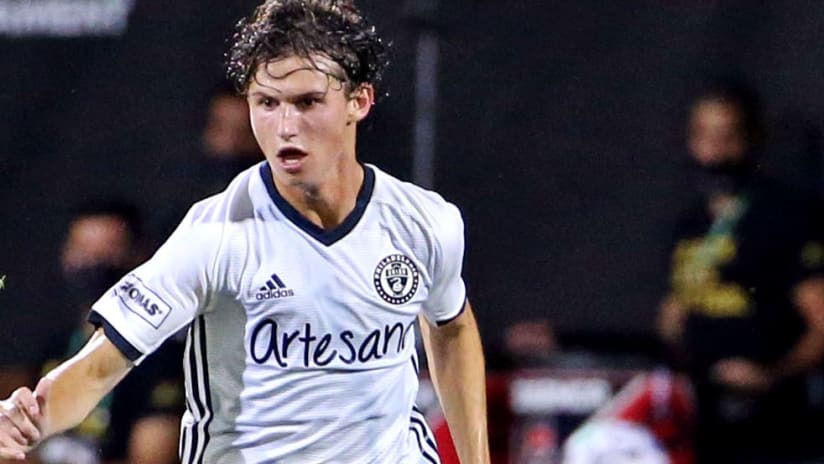This is the fourth in a series of 20 short columns focused on the things I'm thinking about as we approach the 20th season of Major League Soccer. I'm going to dig into mostly non-obvious questions here – the tertiary stuff that can become bigger over time – rather than the giant storylines (e.g., How do the Red Bulls replace Henry? What if Ozzie's injury lingers? Is this THE year for TFC?).
You can find previous installments in my story archive HERE. For this latest, we're on the bank of the Delaware...
I have this story I like to tell every now and again. It's from three years back, it's about misallocation of resources, and it's about the persistent American problem of identifying the right roles for our best talents.
The story is this: I have an acquaintance who is a native of Europe, has worked as a coach and scout for several high-level clubs there, and is now intimately involved in soccer here in the US. He was talking about Andrew Wenger, who had played a variety of positions at Duke and now was expected to be one of the top picks of the 2012 SuperDraft.
"What is Wenger's ceiling at center forward?" was the question.
"MLS All-Star, maybe," was my friend's answer.
"What is Wenger's ceiling at central defender?" was the follow up.
Without hesitation: "Real Madrid."
Wenger is an other-worldly athlete, up near the very top of the "Guys who just have more raw materials to work with than anyone else" list. He could play three or four different spots in the best collegiate league there is, and perform at a Hermann Trophy-level clip at each of them. He could have one scout dreaming Champions League dreams in central defense, and another thinking "Oh my God, this is what Brian McBride with pace and close control would look like."
Turns out Wenger was all that and none of it. Too many coaches have told me that he just doesn't have the right instincts to be a defender for me to entirely believe my friend's assessment; but too many reps at center forward have told me Wenger's not a good enough finisher to play there, either:
So close.
Luckily for Wenger and for fans of the game here in general, the return to prominence of the true winger in a 4-3-3 (or 4-2-3-1) reintroduced a more natural spot on the field. In the middle of 2014, the Philadelphia Union decided to use Wenger more as a wide player than a target forward – or even a second forward – opening up the wings for him to just pound the living hell out of opposing fullbacks, creating as many chances via his athleticism as via his skill while still occasionally streaking across the box to be goal-dangerous.
That's Wenger's position now: target winger. In isolation he is a mismatch against anyone, so when the Union need to go long they hit diagonals to Wenger instead of up the middle. He does a lot of knock-down, No. 9 work – but does it on the flanks, against guys he's usually got inches and physicality on. Or he can dive inside, strafing flat-footed central defenders and taking off at a gallop that nobody in the league is going to catch (as in the goal clip above).
It may be a little bit regressive, but if you have a guy who can function as sort of a bigger, stronger version of Fabian Castillo, you'd be stupid not to use him that way. Jim Curtin is not stupid.
Wenger made the adjustment work, picking up four goals in the last 10 games of the season once he'd entered the starting lineup, and generally looking more at home out wide than he ever had in the middle.
It is, perhaps, the spot he was meant to play all along – the right role for one of the league's best talents.






